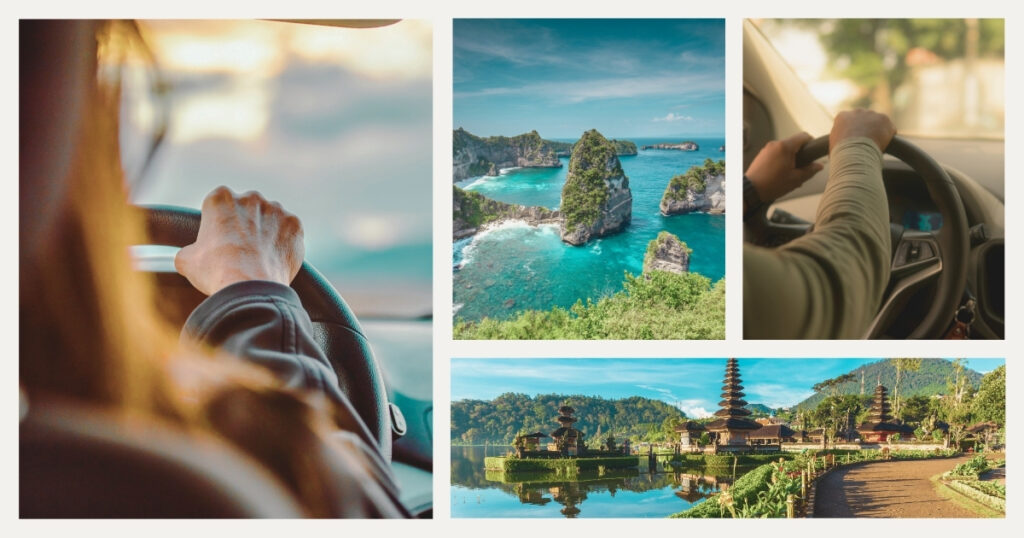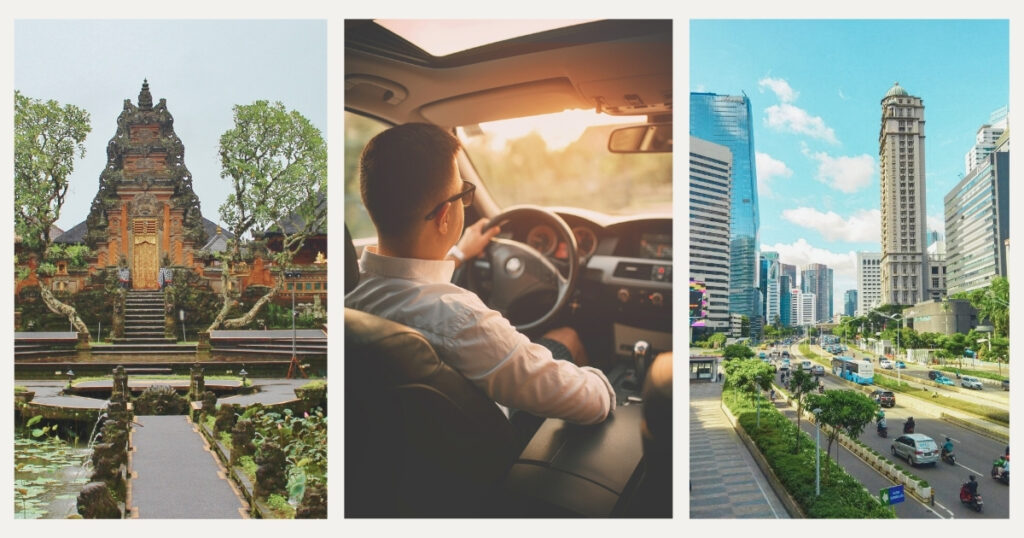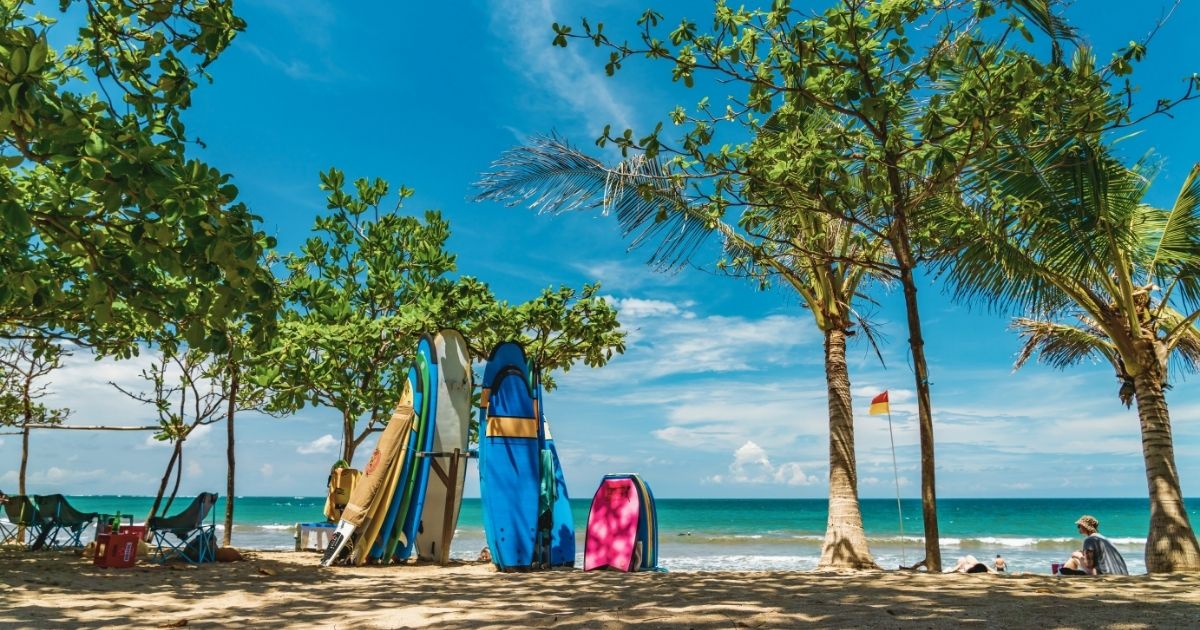Navigating the bustling streets of Jakarta or the winding roads of Bali requires more than just courage—it demands proper documentation. Understanding how to obtain and use a driver’s license in Indonesia is essential for digital nomads seeking to explore this vast archipelago beyond the confines of tourist areas.
The freedom to drive yourself opens up countless opportunities to discover hidden gems across Indonesia’s 17,000+ islands. From secluded beaches perfect for remote work sessions to mountain retreats with spectacular views, having the proper driving credentials transforms your nomadic experience.
This comprehensive guide explores everything you need to know about driver’s license requirements in Indonesia, whether you’re planning a short-term adventure or considering this tropical paradise as your long-term base for location-independent work with Nomada.
Understanding driver’s license options in Indonesia

Before hitting Indonesia’s roads, digital nomads must navigate the somewhat complex landscape of driving permit options. Your legal ability to drive depends on several factors, including your nationality, intended length of stay, and the type of vehicle you plan to operate.
International Driving Permit (IDP) for visitors
For most digital nomads visiting Indonesia, an International Driving Permit (IDP) accompanied by your home country’s valid driver’s license provides the simplest solution. This internationally recognized document translates your existing license into multiple languages, including Bahasa Indonesia, making it comprehensible to local authorities.
An IDP for use in Indonesia must be obtained in your home country before arrival, as it’s not possible to apply for one while already in Indonesia. The permit remains valid for up to one year, though it cannot exceed the validity period of your original driver’s license.
🌟 Pro tip: always carry both your original driver’s license and IDP together when driving in Indonesia. Neither document is valid without the other, and police checkpoints are common, especially in tourist areas like Bali and Lombok where officers routinely verify driving documentation.
Indonesian National Driver’s License (SIM)
For digital nomads planning extended stays, obtaining a local driver’s license in Indonesia—known as Surat Izin Mengemudi (SIM)—may prove more practical than repeatedly renewing an IDP. The SIM comes in several categories:
- SIM A: for cars and other light vehicles
- SIM C: for motorcycles and scooters (the most common choice for digital nomads)
- SIM B1/B2: for larger vehicles
The application process for a driver’s license in Indonesia involves a written test, a practical driving examination, and a vision test. While challenging for non-Indonesian speakers, the process provides a legally sound long-term solution for those on extended visas.
💡 Did you know? Indonesia ranks among the top countries where police might stop foreign drivers, not necessarily for traffic violations but sometimes to verify documentation. Having proper credentials prevents potential complications that could disrupt your remote work schedule.
How to apply for an driver’s license in Indonesia (SIM)

If you’re staying in Indonesia beyond a typical tourist visa duration, applying for a local driver’s license offers advantages beyond legality—it simplifies interactions with authorities and eliminates the need to renew your IDP annually. Here’s what the process entails.
Eligibility requirements and documentation
To apply for a driver’s license in Indonesia, you’ll need to meet several eligibility criteria:
- Hold a valid KITAS (temporary stay permit) or KITAP (permanent stay permit)
- Be at least 17 years old for a motorcycle license or 18 for a car license
- Pass physical and written examinations
- Demonstrate driving proficiency through a practical test
The required documentation typically includes your passport with valid visa/stay permit, your existing home country driver’s license, KITAS/KITAP card, proof of local address, passport photos, and completed application forms.
Digital nomads should note that tourist visa holders cannot typically apply for an Indonesian SIM, making this option viable only for those with proper residency documentation such as the increasingly popular digital nomad visa or other long-term stay permits.
Application process and testing
The process to obtain a driver’s license in Indonesia involves several steps, typically completed at the local police station’s traffic division (Satlantas):
- Initial application: submit your completed forms and required documents.
- Fee payment: pay the administrative fees (approximately IDR 120,000-230,000).
- Written test: complete a multiple-choice examination on traffic rules.
- Practical driving test: demonstrate your driving abilities on a designated course.
- SIM card issuance: receive your physical license card if all tests are passed.
For many digital nomads, the language barrier presents the greatest challenge during this process. Consider bringing an Indonesian-speaking friend or hiring a local assistant to help navigate the bureaucracy.
🌟 Pro tip: practice the specific driving course skills beforehand. The practical test often includes navigating figure-eight patterns, straight lines, and sudden stops—manoeuvres that differ from typical road driving but determine test success.
Practical tips for driving in Indonesia

Beyond obtaining the proper documentation, digital nomads should understand the practical realities of navigating Indonesia’s unique driving landscape. Cultural norms, road conditions, and connectivity considerations all impact your driving experience.
1. Understanding Indonesian driving culture
Driving in Indonesia differs significantly from Western countries, with unwritten rules often superseding official traffic regulations. Lanes are frequently treated as suggestions rather than requirements, and the hierarchy of vehicles (larger vehicles command right-of-way) may surprise newcomers. Motorcycles weave between cars, and honking serves as communication rather than expressing annoyance.
For digital nomads accustomed to structured driving environments, adaptation requires patience and heightened awareness. Start by driving in less congested areas during daylight hours until you become comfortable with the flow.
Traffic enforcement varies widely across regions. In Bali, police checkpoints targeting foreigners without proper driver’s license documentation are common, especially during high tourist seasons. Jakarta enforces odd-even license plate restrictions on certain days to reduce congestion.
2. Connectivity and navigation considerations
Maintaining reliable connectivity represents a critical concern for digital nomads navigating Indonesia’s diverse terrain. While urban areas generally offer strong cellular coverage, significant gaps exist in rural and mountainous regions.
Secure consistent connectivity with a dedicated Indonesia eSIM from Holafly, which provides immediate data access across Indonesia’s multiple networks. This eliminates the hassle of purchasing local SIM cards and ensures you maintain navigation capabilities and emergency communication options.
For navigating Indonesia’s often complex and poorly marked road systems, consider using multiple mapping applications. While Google Maps provides good coverage in urban areas, apps like Waze better account for real-time traffic conditions in major cities.
Key considerations for maintaining digital nomad productivity while driving in Indonesia:
- Schedule client calls and video conferences only when stationary
- Research workspace options along your intended route beforehand
- Avoid scheduling critical work deliverables on travel days
- Allow significant time buffers for journeys as traffic conditions are unpredictable
🌟 Pro tip: for digital nomads regularly switching between work and exploration, consider renting a scooter or motorbike in addition to a car when in Bali or other congested tourist areas. The motorcycle license (SIM C) allows you to navigate traffic more efficiently during short trips while maintaining the car option for longer journeys with equipment.
Regional variations in driver’s license requirements

Indonesia’s decentralized governance creates significant regional variations in how driver’s license regulations are implemented and enforced. Digital nomads should understand these differences, especially if their work takes them across multiple Indonesian provinces.
Bali-specific considerations
As Indonesia’s premier digital nomad hub, Bali presents unique circumstances regarding driver’s license enforcement. The island’s dependency on tourism has created a somewhat more relaxed attitude in some areas, but this is rapidly changing with increased enforcement, particularly in the Canggu, Seminyak, and Kuta regions.
Police checkpoints specifically targeting foreigners are common, with officers verifying both your driver’s license in Indonesia and your visa status. Penalties for violations typically involve on-the-spot fines, with inconsistent official rates.
Bali’s narrow, winding roads and heavy scooter traffic present additional challenges beyond documentation. Even with a valid license, familiarize yourself with local driving patterns before attempting to navigate busier areas.
Jakarta and other major cities
In Jakarta and other major urban centers, driver’s license enforcement focuses more on general traffic regulation than targeting foreigners specifically. The capital’s notorious congestion has led to various restriction systems, including the odd-even license plate policy (kendaraan ganjil-genap) that limits which vehicles can enter certain areas on specific days.
For digital nomads based in urban centers, driver’s license requirements may interact with vehicle registration regulations. Many urban-based remote workers find that ride-sharing services, combined with occasional short-term rentals for specific trips, provide a more practical solution than vehicle ownership.
Final thoughts on managing driver’s license requirements in Indonesia
Navigating the requirements for a driver’s license in Indonesia represents just one aspect of creating a productive and legally compliant nomadic lifestyle in this diverse archipelago. While obtaining the proper documentation requires some effort, the freedom and flexibility that legal driving privileges provide justify the investment for digital professionals seeking to balance work with exploration.
Indonesia’s unique geography makes independent transportation not merely convenient but often essential for accessing inspiring workspaces beyond the established digital nomad hubs. From beachfront cafés to mountain retreats, many of Indonesia’s most productivity-enhancing environments remain accessible only by private vehicle.
Remember that regulations evolve continuously, and enforcement practices vary across regions. The most prudent approach remains obtaining proper documentation before arrival, ensuring compliance regardless of which Indonesian regions your journey includes.
For more insights on establishing your digital nomad presence in Indonesia beyond transportation concerns, check out our comprehensive guide to Indonesia’s digital nomad visa options.
Your Indonesian adventure awaits—explore with confidence and legal clarity 👉
Frequently asked questions about driver’s licenses in Indonesia
No, a foreign driver’s license alone is not sufficient to legally drive in Indonesia. You must also have either an International Driving Permit (IDP) issued in your home country or obtain an Indonesian driver’s license (SIM). The IDP must be accompanied by your original license whenever you’re driving.
An International Driving Permit is valid for up to one year in Indonesia, provided it doesn’t exceed the expiration date of your original driver’s license. For digital nomads planning stays beyond one year, obtaining an Indonesian SIM becomes necessary as an IDP cannot be renewed within Indonesia.
Generally no, tourist visa holders cannot apply for an Indonesian driver’s license (SIM). You typically need a temporary stay permit (KITAS) or permanent stay permit (KITAP) to be eligible. This makes Indonesian licenses primarily accessible to digital nomads on longer-term visas rather than those making shorter visits.
Driving without a proper license in Indonesia can result in fines (typically IDR 250,000-1,000,000), potential vehicle impoundment, and legal complications that could affect your visa status. The severity of consequences varies by region, with tourist areas often implementing more frequent checkpoints targeting foreign drivers.




